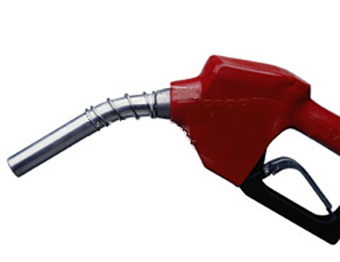Unless you’ve been living under a rock somewhere (and maybe even then) you’ve undoubtedly heard the good news: gas prices are nearly 50 percent lower than they were a year ago.
Fleet companies, heavy equipment contractors, and other companies, apart from those working directly in the oil and gas industry, have seen their costs fall substantially as a result. Some are even making plans to expand into new, far flung territories that high gas prices had once rendered out of reach.
According to some estimates, the low prices represent the equivalent of a $60 billion economic stimulus. Even if your company isn’t planning a major project or expansion, now is the time to stock up on gas—prices are already starting to rebound around the country, so take advantage while you can.
In most cases, this means you’ll need to fill your Aboveground Storage Tanks (AST) to capacity. And while you’re at it, you might also want to take this opportunity to inspect these tanks to ensure that they’re safe and environment-friendly.
Purdue University has a free in-depth guide for AST inspections and safety that we highly recommend reading in full. Here are a few of their suggestions, along with tips on how to implement them with your maintenance management software.
+ Placement and containment
ASTs and other gas storage containers should be placed as far away from natural water sources as possible. Even a small leak can contaminate a water supply, resulting in harm to the environment and fines from regulatory agencies.
The Purdue guide suggests making sure that ASTs are installed on a secure base that is level and surrounded by gravel or other materials that will dampen the spread of gas in the event of a leak. Containment measures should be put in place that can hold up to 110 percent of the main tank’s capacity.
If relocating an AST, or investing money to reinforce existing installations seems dramatic, consider the case of a Pennsylvania-based Cabot Oil and Gas. After a fuel storage tank exploded, injuring a worker and leaking 2,835 gallons of oil into the surrounding environment, the company was slapped with a $120,000 fine—and that’s in addition to the damage to their facilities and potential lawsuits/disability claims stemming from the accident.
Scheduling a review of current AST placement and containment measures is a simple, low-cost way to identify problems before they turn into major disasters. Be sure to review Purdue’s full recommendations for placement and containment best practices.
+ Hose wear and physical barriers
Are your pumps and hoses ever left on the ground? According to the Purdue guide, a pump that leaks just one drop per second can dump as much as 400 gallons of gas into the ground over the course of a year.
Hoses and pumps should therefore always be stored within the containment area and checked regularly for drips and leaks. Hoses should likewise be kept off of the ground wherever possible—hoses that sit on the ground in high traffic areas are often run over, increasing their wear and the potential for future leaks and accidents.
In your maintenance software, make hose and pump checks a part of your regular inspections. If these inspections fail, be sure to set the system to generate a work order immediately to have the pump shut down and fixed immediately.
Physical barriers, such as bollards, should be installed around ASTs to prevent them from being struck by a vehicle. In high traffic areas, these protective measures are particularly important. These should also be inspected periodically to ensure that they are sturdy.
+ Ventilation and tank condition
Ventilation is a major concern wherever flammable liquids are being handled. ASTs should have primary and emergency vents to release vapors that build up in high temperatures.
Check to make sure that the primary vent is as wide as the fuel pipe and above normal snow/rain levels. Vents should be regularly checked for obstructions of any kind including weeds and debris. Emergency vents should be tested periodically to ensure that they are working properly.
In order to minimize the buildup of vapors, coat your tank with a primer that will lower the temperature and deflect heat. You can also look at building a heat reflecting cover over the tank to keep temperatures low.
In terms of tank condition, be sure that maintenance staff is routinely checking for signs of corrosion and damage. These are common causes of leaks that can damage the environment and waste expensive fuel.
All of these checks can be incorporated into a regular maintenance schedule that can be performed monthly or quarterly depending on usage rates. Maintenance software programs make these easy to set up, and help ensure that these important checks aren’t neglected.

